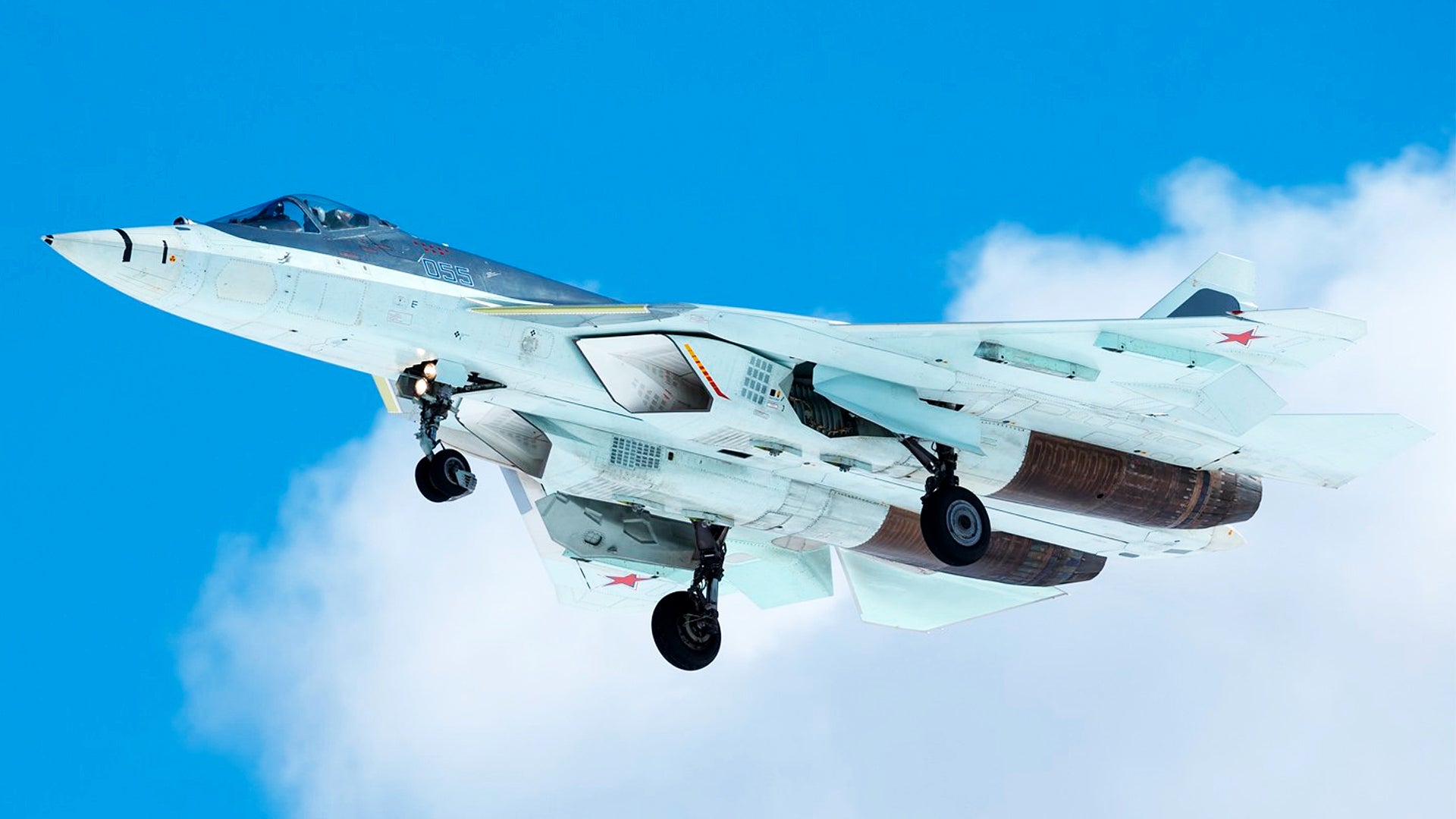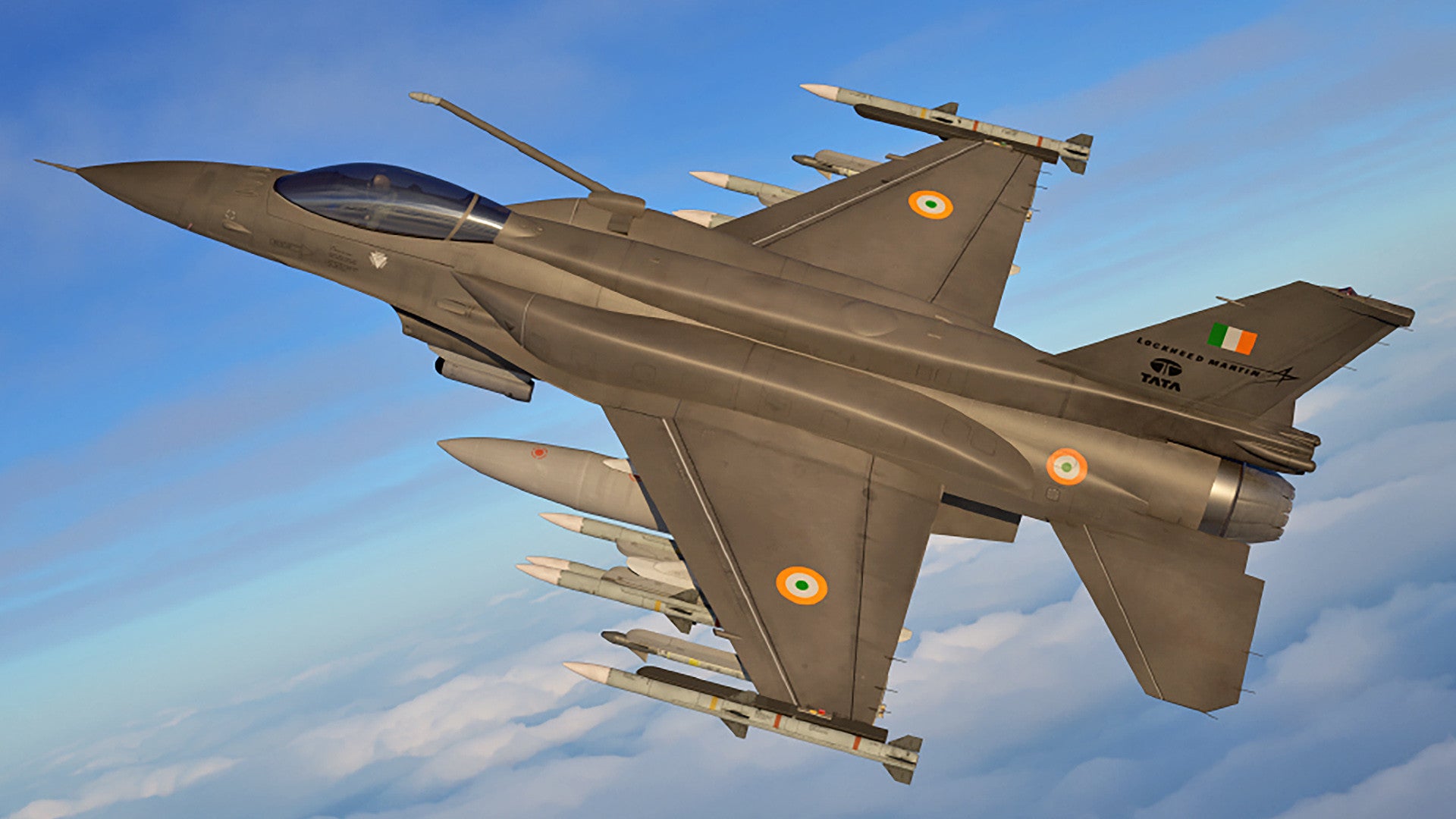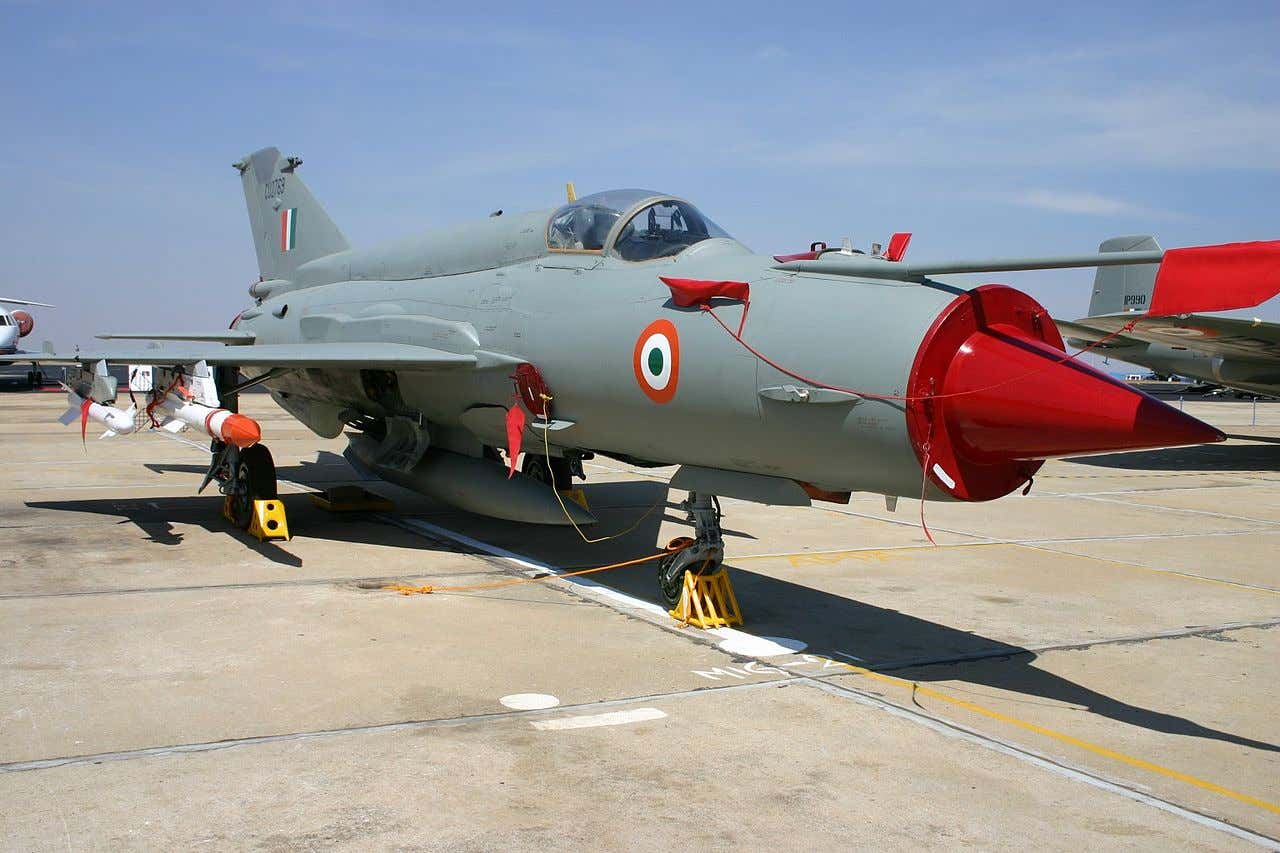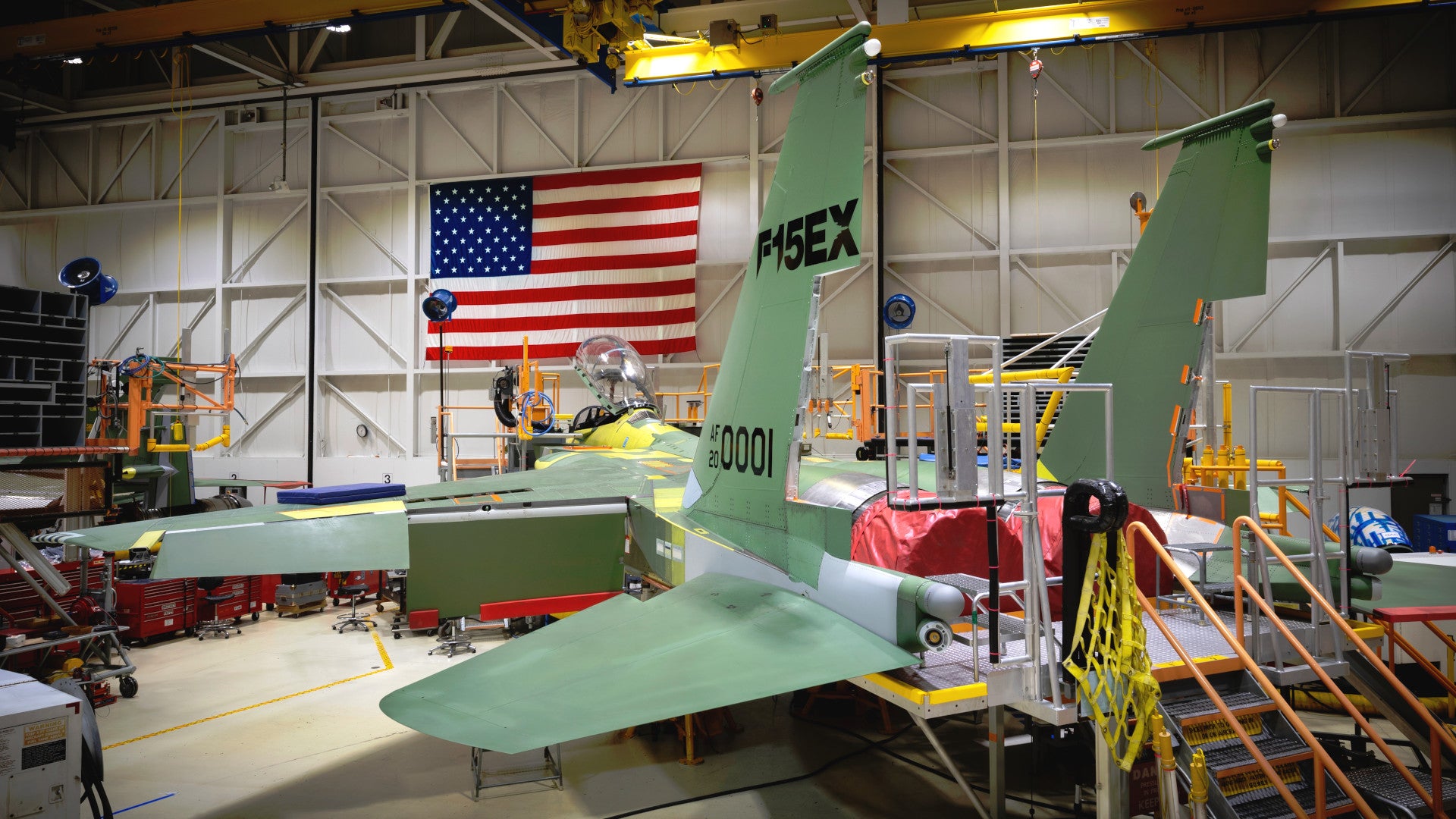Boeing has been given the green light to formally offer its F-15EX fighter jet to India. While that country is seeking to revamp its air arm following various abortive or stalled efforts that have so far failed to truly address the Indian Air Force’s fighter shortfall, but that’s not to say that the mighty Eagle is necessarily the right fit. While Boeing had previously eyed India as a potential F-15 customer, as The War Zone discussed last summer, the marketing license approval from the U.S. government does now mean that a potential sale has become a much more realistic proposition.
Ankur Kanaglekar, the India Fighters Lead at Boeing Defense, Space, and Security, revealed the company had received the marketing license and said that there had already been talks with the Indian government about the F-15EX while speaking with reporters today. Kanaglekar’s remarks come ahead of the biennial Aero India tradeshow, which opens next week at the Indian Air Force’s Yelahanka Air Force Station outside of the southern Indian city of Bengaluru.

“Now that we have the marketing license it allows us to talk to the Indian Air Force directly about the capability of the fighter,” Kanaglekar said, according to Reuters. The Boeing executive added that the company expects further discussions about the F-15EX with Indian officials to take place during the course of Aero India.
Described by Boeing as the most advanced version of the F-15 ever built, the F-15EX was tailored for the U.S. Air Force, as a variant of the F-15 Advanced Eagle family, which you can read about in more detail in these past War Zone pieces. The service ultimately plans to buy at least 144 of these aircraft, primarily to replace existing aging F-15C/D Eagles.
As the latest iteration of the Advanced Eagle family, the F-15EX is also being increasingly promoted as an export product too, with Boeing concentrating on new potential deals with Israel, which has placed a request for information for up to 25 new Advanced F-15s, and which is eyeing upgrades for 25 of its existing F-15I aircraft, and India, where there is an outstanding requirement for 114 new fighter jets. It’s here that Boeing has identified a possible sales opportunity for its F-15EX variant, pitching its top-of-the-line fighter to what would be an entirely new Eagle customer.
Currently, there is a great diversity of aircraft in the running for a future Indian fighter order. Above all, this reflects the different, sometimes confusing paths that this procurement has taken, evolving from the collapsed Medium Multi-Role Combat Aircraft (MRCA) competition for 126 aircraft, via a plan to purchase single-engine fighter jets that was then opened up to include twin-engine designs. Amid all this, India’s plan to co-produce new-generation Su-57 stealthy fighter jets with Russia under the Fifth Generation Fighter Aircraft program, or FGFA, dramatically fell through, amid well-publicized Indian concerns about the viability of that project.

Amid all this disruption, the IAF has long been seeking a new fighter to both modernize its existing fleet, which is still dominated by older Russian-designed jets, and to expand its overall size in an effort to keep pace not only with the Pakistan Air Force, with which the IAF clashed in early 2019, but also China’s rapidly expanding and increasingly advanced air force.
New Delhi has, of course, already purchased a new-generation fighter in the shape of the Dassault Rafale, 36 of which are currently being delivered. The Rafale total, however, falls well short of the kinds of numbers of fighters the IAF would ideally like to acquire and the current Rafale procurement is seen as an interim solution.
As well as the F-15EX, other potential candidates in a relatively open field could include more Rafales, or even Boeing’s own F/A-18E/F Super Hornet, in a land-based role. The Eurofighter Typhoon, which previously lost out to the Rafale in the Indian MMRCA competition, could also return, as could the Russian-made MiG-35 Fulcrum and Su-35 Flanker, both of which are much-modernized derivatives of aircraft that are already in IAF service, the MiG-29, and Su-30MKI.
Additional contenders include single-engine types such as the Lockheed Martin F-16, which the manufacturer has also offered in an Indian-specific F-21 configuration, or the Saab Gripen.

Outside of the IAF fighter equation, Boeing has been very active elsewhere in India. As well as offering the F-15EX, the company has continued work demonstrating its F/A-18E/F from a ground-based “ski jump” ramp, as it pitches this jet to meet an Indian Navy requirement for a new carrier-based multi-role fighter.
Having Air Force and Navy units flying the same aircraft, or similar variants with a high commonality between airframe components and mission systems, could help reduce fleet management issues, as well as logistical and other sustainment costs substantially.
Boeing already has recorded significant previous success selling its products to the Indian military, including P-8I maritime patrol aircraft for the Indian Navy, as well as AH-64E attack helicopters and CH-47F(I) heavy-lift helicopters for the Indian Air Force (IAF). The AH-64E is also being built in India by Tata Boeing Aerospace Limited, with the first examples for the Indian Army to be completed this year.
Aside from Boeing’s success elsewhere in the Indian market, and with so many different fighters in the mix, observers might well ask whether the F-15EX is the right choice for India. The capabilities of the Advanced Eagle are without question, and The War Zone has explored them in depth in previous articles here and here.
On the other hand, the F-15EX is also an expensive option when it comes to buying in bulk, which is a key consideration as the IAF seeks to boost its number of frontline fighter squadrons to 42. That number itself is arguably increasingly arbitrary since it speaks to quantity rather than quality.
“The government decided on 42 squadrons of contemporary fighters in the 1980s,” Angad Singh, a long-time Indian defense observer told The War Zone. “Pakistan and China have only marched ahead since then, and the IAF’s force structure is anything but contemporary. We’re not spending enough to sustain the current mix of 30 squadrons, and in the future, we are surely going to need over 42.”

The 114-aircraft Indian requirement has an estimated program cost of around $15 billion, which compares starkly to the approximately $12 billion that was the reported value of Qatar’s contract to buy just 36 F-15QAs, via the U.S. military’s Foreign Military Sales program, in 2017, although this included significant quantities of ancillary equipment and weapons.
Meanwhile, the U.S. Air Force is projected to purchase a minimum of 144 F-15EX jets and an associated indefinite-delivery/indefinite-quantity contract has a ceiling of $22.89 billion to cover a maximum of 200 new Eagles.
Of course, the final cost of an Indian F-15EX deal would depend not only on aircraft numbers but associated equipment and support services and would also need to factor in potential offsets for local industry, depending on its level of involvement.

Speaking to The War Zone last summer, Prat Kumar, Boeing’s Vice President and Program Manager for the F-15 also seemed to express doubts that the jet was exactly right for India, remarking that he was not sure if it was “in the sweet spot” for the requirement. Perhaps, Boeing felt that its F/A-18E/F was a more likely solution for the IAF, especially if the same type were to be selected by the Indian Navy too. Unconfirmed reports suggest that Boeing will drop one of either the Super Hornet or the F-15EX as the Indian requirement develops.
Above all, the F-15EX for India might just be the right aircraft at the wrong time. Indian defense spending is currently in the doldrums, with the big-ticket programs more often than not the most at threat.
“Big import programs are always first on the chopping block,” Angad Singh told The War Zone. “As much as the IAF would like a contemporary western aircraft to be produced in India, the government is instead likely to prioritize top-up purchases of existing types and more examples of the indigenous Tejas lightweight fighter.”

Aside from the high-profile, stopgap Rafale buy, new equipment for the IAF has comprised piecemeal purchases of second-hand MiG-29s and attrition-replacement Su-30MKIs from Russia, while the focus instead moves to efforts to secure orders for the Tejas, a program that has suffered more than its fair share of delays and other setbacks.
Then there is the question of the Indian government’s requirements for technology transfer and industrial cooperation. This has been a stumbling block in the past and was at the root of the failure of the MMRCA program in 2015.
For India, any future fighter purchase will also have to demonstrate that it contributes to the domestic defense-industrial capacity. Here, too, even apparently attractive offerings, such as Lockheed Martin’s arrangement with Indian industrial consortium Tata, which promised to set up an Indian F-16 production line and allow it to build additional aircraft for export, but which, so far, has not been enough to secure any orders.

Another potential hurdle to an Indian F-15EX purchase is a doctrinal one. While the IAF has previously settled on the heavyweight Su-30MKI as the backbone of its fighter fleet, its experience with the big Russian jet has not been an entirely happy one. While there have been technical issues and other problems with the Flanker, the IAF has traditionally operated smaller fighters, which have generally proven easier to maintain as well as better able to operate from more austere airbases with a reduced requirement for supporting infrastructure. This, too, may count against the F-15.

In the meantime, the lack of clarity in terms of what the IAF wants and what the Indian government can afford is not going to help solve an urgent need for more fighters. After all, as long ago as 2001, when there were still 39.5 IAF fighter squadrons, the service had identified a requirement for 126 modern fighters but aspirations to buy this number perished with the demise of the MMRCA effort and there has been little concrete progress since then.
In the intervening years, the current IAF fighter inventory has only gotten older, and squadron numbers have diminished as various types have been retired wholesale. New Delhi needs to find a solution sooner rather than later but, in this case, at least, the F-15EX might not be the answer.
Contact the author: thomas@thedrive.com
